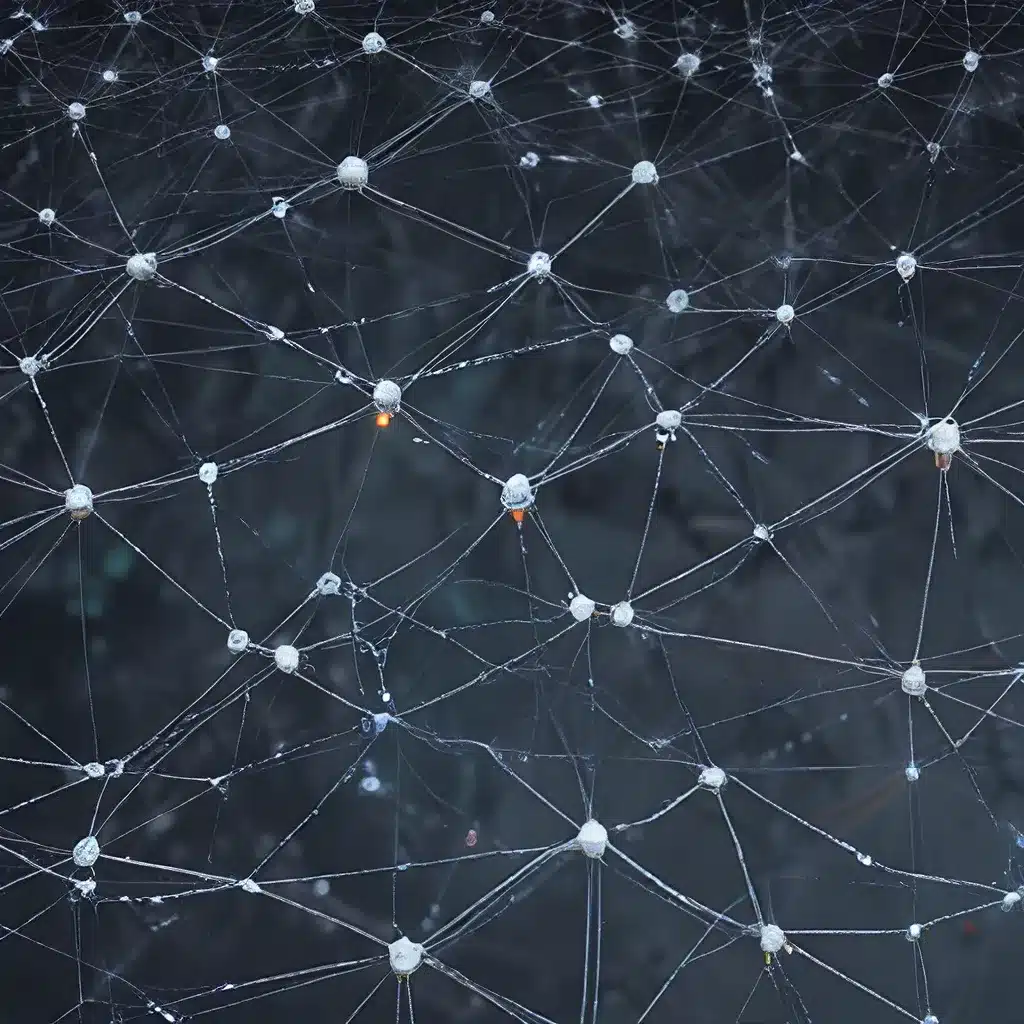
Sensor networks have become an integral part of our modern technological landscape, enabling a wide range of applications, from smart cities and precision agriculture to healthcare and disaster response. As these networks continue to grow in scale and complexity, the need for robust and efficient data transmission becomes increasingly critical.
One of the key challenges in sensor network design is maintaining connectivity and coordination in dispersed environments, particularly when nodes are operating beyond the range of a central master controller. Distributed algorithms offer a promising solution, allowing sensor nodes to self-organize and collaborate without relying on a single point of failure.
Navigating the Challenges of Multi-Hop Sensor Networks
In many real-world scenarios, sensor nodes may be geographically dispersed, requiring multi-hop communication to relay data from the periphery to a central hub or control station. This increased range comes with its own set of challenges, including:
-
Limited Scalability: As the number of nodes in the network grows, the overhead and congestion associated with multi-hop routing can significantly degrade overall performance.
-
Unreliable Connections: Wireless links between nodes can be unstable and susceptible to interference, leading to packet loss and delayed deliveries.
-
Coordination Complexity: Coordinating the actions of a distributed sensor network, especially when nodes are operating beyond the range of a central controller, can be a daunting task.
To address these challenges, researchers have explored various distributed algorithms and coordination models that can enable resilient sensor networks capable of operating in multi-hop environments.
Distributed Algorithms for Resilient Sensor Networks
One promising approach is the use of distributed algorithms that allow sensor nodes to self-organize and communicate without relying on a centralized control system. These algorithms leverage the collective intelligence of the network, enabling nodes to discover their neighbors, establish multi-hop routes, and coordinate their actions in a decentralized manner.
Neighbor Discovery and Multi-Hop Routing
A critical first step in enabling multi-hop sensor networks is for each node to discover its immediate neighbors and determine the optimal paths to the central control station or data collection point. Distributed algorithms, such as the enhanced multi-hop clustering algorithm (EMCA) and on-demand multicast routing protocol (ODMRP), can facilitate this process by allowing nodes to autonomously build and maintain routing tables without the need for a centralized coordinator.
Research has shown that these approaches can significantly improve the scalability and resilience of sensor networks, particularly in scenarios where the communication range of individual nodes is limited.
Coordinating Sensor Swarms
In addition to routing, coordinating the actions of a distributed sensor network is another key challenge. Swarm-based approaches, inspired by the collective behavior of natural systems like ant colonies and bird flocks, offer a promising solution.
Sensor networks can leverage master-slave coordination models, where a central master node directs the actions of slave nodes in the network. This hierarchical structure can simplify the decision-making process and improve synchronization among the sensor nodes, even in multi-hop environments.
Researchers have also explored autonomous coordination techniques, such as pheromone-inspired algorithms, that allow sensor nodes to self-organize and adapt to changing environmental conditions without the need for centralized control.
Enhancing Security and Energy Efficiency
As sensor networks become more widespread, security and energy management are increasingly important considerations. Distributed algorithms can play a crucial role in addressing these challenges as well.
Secure Communication in Sensor Networks
Distributed cryptographic algorithms can enable sensor nodes to establish secure communication channels without relying on a central authority. Techniques like distributed key management and threshold-based authentication can protect sensor data from unauthorized access and tampering.
Research has demonstrated that these approaches can enhance the overall security of sensor networks while minimizing the computational and communication overhead on individual nodes.
Energy-Efficient Sensor Network Design
Energy consumption is a critical concern in sensor networks, as nodes often rely on limited battery resources. Distributed algorithms can help optimize energy usage through techniques like load balancing, duty cycling, and data aggregation.
For example, multi-hop clustering algorithms can distribute the energy load across the network, prolonging the overall lifetime of the sensor system. Distributed data aggregation protocols, on the other hand, can reduce the amount of data that needs to be transmitted, thereby minimizing the energy expenditure associated with wireless communication.
The Future of Sensor Networks: Embracing Distributed Intelligence
As sensor networks continue to evolve and expand, the adoption of distributed algorithms will be pivotal in unlocking their full potential. By empowering sensor nodes to self-organize, coordinate, and secure their communications, these algorithms can enhance the resilience, scalability, and efficiency of sensor network deployments across a wide range of applications.
Looking ahead, the integration of distributed intelligence with emerging technologies, such as edge computing and artificial intelligence, will further transform the way we design, deploy, and manage sensor networks. This convergence of distributed algorithms and advanced computing capabilities will pave the way for truly autonomous and adaptive sensor systems that can respond dynamically to the ever-changing needs of our increasingly connected world.